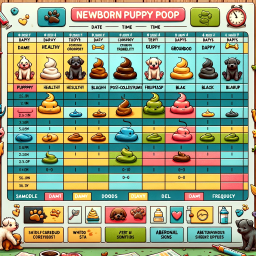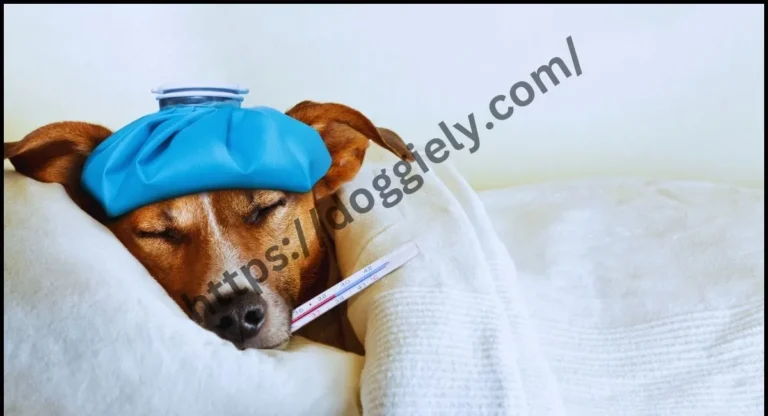How to Brush Dog’s Teeth With Toothpaste?

How to Brush Dog’s Teeth With Toothpaste?As a dog owner, you’re likely familiar with the joys of pet ownership, from the unconditional love to the endless entertainment. However, along with the fun comes the responsibility of ensuring your dog’s well-being, which includes their dental health.
Brushing your dog’s teeth might not be the first thing that comes to mind when you think of pet care, but it’s an essential aspect of maintaining their overall health. Also, As a pet owner, you may have noticed signs of dental problems in your dog, such as bad breath, plaque build-up, or even a visible discomfort while eating.
These symptoms are not just minor inconveniences but can be indicators of more significant dental issues. Brushing your dog’s teeth is a crucial step in addressing and preventing these problems.
This article will guide you through the process of effectively on how to brush dog teeth to tackle existing dental issues and promote overall oral health.
How to Brush Dog’s Teeth With Toothpaste?
Understanding and Enhancing Your Dog’s Dental Hygiene: A Guide to Brushing Your Dog’s Teeth
As a dog owner, you’re likely familiar with the joys of pet ownership, from the unconditional love to the endless entertainment. However, along with the fun comes the responsibility of ensuring your dog’s well-being, which includes their dental health. Brushing your dog’s teeth might not be the first thing that comes to mind when you think of pet care, but it’s an essential aspect of maintaining their overall health. In this article, we’ll delve into why dental hygiene is vital for dogs and how you can effectively brush your dog’s teeth.
Why Dental Hygiene Matters for Dogs
Dental health in dogs is more than just about a bright smile or preventing bad breath. Poor oral hygiene can lead to various health issues, including gum disease, tooth decay, and, in severe cases, it can even affect a dog’s vital organs. Regular teeth brushing removes plaque and tartar build-up, ensuring your furry friend maintains a healthy mouth.
Understanding Dental Problems in Dogs
Dental issues in dogs can range from mild plaque and tartar build-up to more serious conditions like gingivitis or periodontal disease. These problems can lead to pain, tooth loss, and can even impact the overall health of your dog. Therefore, identifying and addressing these issues early is essential.
Getting Started: What You Need
Before you start, you’ll need a few supplies. opt for a toothbrush designed specifically for dogs, as they are tailored to fit their mouth structure. You’ll also need dog-specific toothpaste, as human toothpaste can be harmful to dogs. Look for flavors that appeal to your dog, like chicken or beef, to make the experience more enjoyable for them.
Step-by-Step Guide to Brushing Your Dog’s Teeth
- Introduce the Concept: Allow your dog to get familiar with the taste of the toothpaste and the feeling of the toothbrush. Let them lick some toothpaste off your finger or the brush.
- Gradual Introduction: Start by gently rubbing your dog’s teeth and gums with your finger. This step helps them get used to the sensation.
- Begin Brushing: Using the toothbrush, gently brush the teeth in a circular motion, focusing on one quadrant of the mouth at a time. Pay special attention to the gum line, where plaque tends to accumulate.
- Be Patient and Gentle: If your dog shows signs of discomfort, take a break and try again later. Never force the process, as this can create a negative association with brushing.
- Consistency is Key: Aim to brush your dog’s teeth daily. Consistency helps in reducing plaque build-up and improves dental health over time.
- Reward Your Dog: After each brushing session, reward your dog with a treat or their favorite game. This positive reinforcement makes brushing a more pleasant experience for your dog.
Dealing with Resistant Dogs
If your dog is resistant to brushing, try incorporating it into a routine after activities they enjoy, like walks or playtime. You can also use dental chews or toys designed to clean teeth as a supplementary measure, though these should not replace brushing.
You can try brushing during a time when your dog is calm or tired, such as after a walk. Always approach this task with calmness and positivity to create a stress-free environment.
Preventive Measures for Your Dog’s Oral Health
A dog’s dental health is an often overlooked aspect of their overall well-being. Yet, just like humans, dogs can suffer from various dental issues, which can affect their quality of life and even lead to more serious health problems. Understanding and implementing preventive measures for your dog’s oral health is crucial. This article will explore effective strategies for preventing dental issues in dogs, emphasizing the importance of proactive care.
The Importance of Preventive Dental Care in Dogs
Preventive dental care is vital in avoiding common issues like plaque buildup, tartar, gingivitis, and periodontal disease in dogs. These conditions can cause discomfort, pain, and can even lead to severe health complications if left untreated. By taking proactive steps, you can help ensure your dog maintains a healthy mouth throughout their life.
Effective Preventive Measures
- Regular Teeth Brushing: Brushing your dog’s teeth is the most effective way to prevent dental problems. Use a dog-specific toothbrush and toothpaste, and aim to brush their teeth several times a week, if not daily.
- Dental-Friendly Diet: Feed your dog a balanced diet that supports dental health. Certain types of dog food are designed to reduce plaque and tartar buildup. Additionally, chewing on raw bones or special dental chews can help clean your dog’s teeth naturally.
- Regular Dental Check-Ups: Schedule regular dental check-ups with your veterinarian. Professional cleanings can remove plaque and tartar that at-home brushing can’t reach.
- Dental Toys and Chews: Invest in dental toys and chews that are specifically designed to help clean your dog’s teeth as they play and chew.
- Water Additives and Dental Sprays: There are various water additives and dental sprays available that can help reduce bacteria in your dog’s mouth and promote better dental health.
- Educate Yourself: Stay informed about the signs of dental problems in dogs, such as bad breath, difficulty eating, or swollen gums, so you can take action early if issues arise.
Building a Routine
Creating and sticking to a dental care routine is essential. Introduce dental care activities gradually and make them a positive experience for your dog. Regularity and consistency are key to preventing dental issues.
The Role of Genetics and Breed
Some breeds are more prone to dental issues than others. Be aware of your dog’s specific needs and consult your vet for breed-specific dental care advice.
Training Your Dog to Enjoy Tooth Brushing: Tips and Techniques
Training your dog to accept and even enjoy the tooth brushing process can seem daunting, but with patience, consistency, and the right approach, it can be achieved. This not only ensures your dog’s dental health but also turns what could be a challenging task into a bonding experience. Here are some tips and techniques to help train your dog to look forward to tooth brushing.
Gradual Introduction to Tooth Brushing
- Start Early: If possible, introduce your dog to tooth brushing when they are a puppy. Young dogs are generally more adaptable and open to new experiences.
- Familiarization: Let your dog sniff and lick the toothbrush and toothpaste (specifically formulated for dogs) to familiarize them with these new items.
- Positive Association: Associate the tooth brushing process with positive experiences. Use a cheerful tone, offer praise, and provide treats during and after the session.
Making It Enjoyable
- Short Sessions: Keep the brushing sessions short in the beginning to avoid overwhelming your dog.
- Tasty Toothpaste: Use flavored toothpaste like chicken or beef to make the experience more enjoyable.
- Praise and Affection: Offer plenty of praise and affection during and after brushing to make it a pleasant experience.
- Playtime After Brushing: Consider having a play session after brushing to end on a high note.
Dealing with Challenges
- Patience is Key: Some dogs may take longer to get used to brushing. Be patient and never force the process.
- Seek Professional Advice: If you face significant challenges, consider consulting a professional dog trainer or your veterinarian for advice.
Conclusion
Brushing your dog’s teeth is a vital part of their overall health care. By taking the time to establish this routine, you’re not only ensuring their dental health but also preventing potential health issues down the line. Remember, a healthy dog is a happy dog, and your efforts in maintaining their dental hygiene play a significant role in their overall well-being.
This article aims to answer a general questions of how often should i brush my dogs teeth and highlight the importance of dental hygiene in dogs and provide practical advice for pet owners. Regular dental care is an integral part of responsible pet ownership and can lead to a happier, healthier life for your canine companion.
FAQ
1. How often should you brush your dogs teeth?
This question of how often to brush dog teeth is best answered If you’re seeking to address your dog’s bad breath or dental issues through brushing, it’s recommended to brush your dog’s teeth daily. Bad breath in dogs is often a sign of oral hygiene problems like plaque and tartar buildup or even gum disease, which can be mitigated with regular brushing.
Daily brushing helps in several ways:
- Removes Plaque: Brushing daily prevents plaque, a sticky film containing bacteria, from hardening into tartar. Once tartar forms, it’s more challenging to remove and often requires professional dental cleaning.
- Prevents Gum Disease: Gum disease (periodontal disease) is common in dogs and can lead to more serious health problems. Regular brushing keeps the gums healthy and reduces the risk of this disease.
- Controls Bad Breath: Many times, bad breath is a result of bacteria buildup in the mouth. Daily brushing helps control this by physically removing debris and bacteria.
- Early Detection of Dental Problems: By brushing your dog’s teeth regularly, you become familiar with their mouth, making it easier to spot any abnormalities or signs of dental issues early on.
It’s important to use a toothbrush designed for dogs and dog-specific toothpaste. Human toothpaste can be toxic to dogs. Introduce teeth brushing gently and gradually, and consult your vet if you notice signs of serious dental issues or if your dog’s bad breath persists despite regular brushing. They can provide professional cleaning and advice on how often to brush dog’s teeth tailored to your dog’s specific needs.
2. what can i brush my dogs teeth with?
When considering products to brushing your dog’s teeth, especially if your intent is to understand or optimize dental product usage, it’s important to choose items specifically designed for dogs. Here’s a list of suitable products and some tips to brushing your dogs teeth:
- Dog Toothbrush: Use a toothbrush made for dogs. These brushes have softer bristles and are angled differently than human toothbrushes to comfortably fit a dog’s mouth. There are various types, including:
- Standard dog toothbrushes with a handle, similar to human toothbrushes but with softer bristles.
- Finger toothbrushes, which fit over your fingertip and allow for more controlled brushing.
- Dual-head toothbrushes that have two different sized brush heads for different sized teeth.
- Dog Toothpaste: Human toothpaste is not suitable for dogs as it contains ingredients that can be harmful if swallowed. Dog toothpaste is formulated to be safe for dogs and comes in flavors that are appealing to them, like poultry or beef. It’s designed to work without needing to be rinsed out.
- Dental Wipes: If your dog resists brushing, dental wipes can be a good alternative. They are less effective than brushing but can still help in removing plaque and are easier to use.
- Dental Chews and Treats: While not a substitute for brushing, dental chews and treats can help reduce plaque and tartar buildup. Look for products approved by veterinary dental organizations.
- Water Additives or Dental Rinses: These are liquids you add to your dog’s drinking water or apply directly to their teeth and gums. They contain ingredients that help control plaque, tartar, and bad breath.
Remember, the right product can vary depending on your dog’s size, breed, and tolerance for having their teeth brushed. It’s always a good idea to consult with your veterinarian for personalized advice, especially if your dog has specific dental needs or you’re transitioning to a new type of dental care product. They can also demonstrate the proper brushing technique and recommend the best products for your dog’s dental health.
3.can you brush dogs’ teeth with human toothpaste?
No, you should not brush your dog’s teeth with human toothpaste. If you’re comparing human dental care products to those suitable for dogs, it’s important to understand that human toothpaste contains ingredients that can be harmful to dogs.
Here are the key reasons why human toothpaste is not suitable for dogs:
- Toxic Ingredients: Many human toothpastes contain fluoride and xylitol, both of which are toxic to dogs. Xylitol, a common sweetener in human toothpaste, can lead to liver failure and hypoglycemia (low blood sugar) in dogs.
- Foaming Agents: Human toothpaste is designed to foam, which helps in cleaning our teeth. Dogs can’t spit out toothpaste, so the foaming agents can cause stomach upset or gastrointestinal problems.
- Flavor and Palatability: The flavors of human toothpaste are not appealing to dogs and can make the brushing experience unpleasant for them.
- Digestive Upset: Even if the toothpaste doesn’t contain toxic ingredients, the components of human toothpaste aren’t meant to be ingested and can upset a dog’s stomach.
For brushing your dog’s teeth, it’s best to use toothpaste specifically formulated for dogs. Dog toothpaste is safe for dogs to ingest, comes in flavors appealing to them, and doesn’t contain foaming agents. This makes the brushing process safer and more enjoyable for your dog. When comparing human and dog dental care, the fundamental goal of maintaining oral health is the same, but the products and methods used differ significantly due to the different needs and physiology of dogs.
4. are you supposed to brush dogs teeth?
Yes, as a new dog owner, you should definitely include teeth brushing in your dog’s regular care routine. Brushing your dog’s teeth is an important aspect of their overall health maintenance. Here’s why it’s essential:
- Prevents Dental Diseases: Regular brushing helps prevent plaque and tartar buildup, reducing the risk of periodontal disease, which is very common in dogs. Periodontal disease can lead to more serious health issues if not addressed.
- Avoids Bad Breath: Regular dental care helps keep your dog’s breath fresher. Bad breath can often be a sign of underlying dental problems.
- Promotes Overall Health: Dental health is linked to overall health. Poor oral hygiene can lead to other health issues, including heart and kidney problems, as bacteria from the mouth can enter the bloodstream and affect other organs.
- Saves Money in the Long Run: By preventing dental diseases, you reduce the likelihood of needing expensive professional dental treatments or surgeries for your dog in the future.
- Improves Quality of Life: Good dental health means your dog can eat comfortably and enjoy a pain-free mouth, contributing to their overall well-being and happiness.
As a new dog owner, it’s important to start a dental care routine early. Gradually introduce your dog to teeth brushing, using a dog-specific toothbrush and toothpaste. Begin with short sessions and reward your dog to create a positive experience. If you’re unsure about the correct technique or products to use, consult with your veterinarian for guidance. Regular veterinary check-ups will also include a dental assessment, ensuring that your dog’s mouth stays healthy.
5. how to brush a chihuahua teeth?
Brushing a Chihuahua’s teeth, especially as a dog owner, requires a gentle approach and some patience. Chihuahuas, like all dogs, need regular dental care, but their small size and sometimes sensitive nature can make the process a bit unique. Here’s a step-by-step guide:
- Choose the Right Supplies: Use a toothbrush specifically designed for small dogs or a finger brush. Small brushes are easier to maneuver in a Chihuahua’s tiny mouth. Also, get dog-specific toothpaste, preferably in a flavor that appeals to your Chihuahua.
- Create a Calm Environment: Start by choosing a quiet time and place. Ensure your Chihuahua is comfortable and relaxed. You might want to start after a walk or playtime when they are more likely to be calm.
- Introduce the Toothbrush and Toothpaste: Let your Chihuahua sniff and lick the toothbrush and toothpaste. This helps them get used to these new items. You can even let them taste a bit of the toothpaste.
- Start Slowly: Begin by gently lifting your Chihuahua’s lips to expose their teeth. Use your finger to massage their gums and teeth initially. This gets them accustomed to the sensation of something touching their teeth and gums.
- Brush Gently: Once your Chihuahua is comfortable, put a small amount of toothpaste on the brush. Gently brush the teeth in a circular motion, focusing on the gum line. Be extra gentle around the front teeth, as small dogs can be sensitive here.
- Be Patient and Positive: If your Chihuahua resists, don’t force it. Keep sessions short and positive. Praise them and offer treats after each session to build positive associations.
- Frequency: Aim to brush their teeth daily, but if that’s too challenging, brushing several times a week can still be beneficial.
- Regular Dental Check-Ups: Include regular dental check-ups with your veterinarian. They can provide professional cleanings and check for any signs of dental issues.
Remember, Chihuahuas are prone to dental issues due to their small mouths, so regular dental care is crucial. As a new dog owner, it’s important to be patient and consistent with your approach. Over time, teeth brushing can become a routine part of your Chihuahua’s care.
Related Posts:
Read More: Why Does My Dog Open His Mouth When I Pet Him? 7 Reasons
Read More: Why Does My Dog Keep Sniffing My Legs: 5 Common Reasons
Read More: Why Does My Dog Bite Me In The Morning? 2 Way To safe From
Read More: Why Are My Dogs Balls Black? Best Number 1 Answer
Read More: Why Do Dogs Like Peanut Butter?
Read More: Why Does My Dog Nibble My Ear? 10 Reasons
Read More: Why Does My Dog Move Its Bed Around?
Read More: Why Does My Dog Bring Me His Food?
Read More: Why Does My Dog Lay His Head Over My Neck? 7 Reasons





